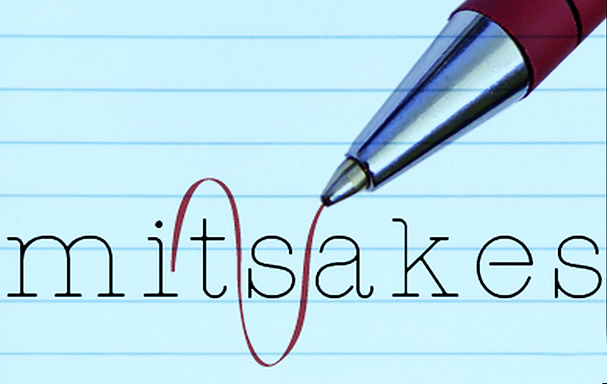The 15 most common CV writing mistakes and how to avoid them!
1 Including a Photograph
Unless you are applying for a job as a model or an actor, do not include a photograph of yourself with your CV.
The recruiter only needs a brief, factual description of your abilities, and photographs often allow recruiters to develop a preconceived idea of you as a person. This may count against you. It is common these days for younger people coming into the workforce to have large piercings in their ears, which may cause an irrational aversion from the recruiter if they see a photograph.
2 Inappropriate heading
Head your CV with your name – boldly and clearly, along with your contact details. Do not head it with ‘Curriculum Vitae’ or ‘CV’.
Traditionally CVs were headed ‘Curriculum Vitae’, but this has been on its way out for quite a few years. This is probably a good thing, because many people misspell it anyway.
3 Missing or inappropriate email addresses
It is important to include an email address on your CV. However, if your email address is a jokey email address, it is advisable to set up a professional email address for obvious reasons.
You may have the perfect CV, but if your email address reads Stevesmith@Ilikesheep.com this is unlikely to get you an interview!
4 Superfluous personal details at the top of your CV
In the past it was considered normal to put details of your marital status, age, nationality and number of dependants/children on your CV. However, this is no longer necessary now that we have anti-discrimination legislation. It also takes up unnecessary space.
None of this information should affect whether you can do the job you are applying for.
5 Lack of clear section headings/separation of headings
It is very important for your CV to be easy for the recruiter to read quickly. Clear section headings and separation of sections are essential.
You may want to cram everything into one page, but if the sections are not clearly headed, it is best to separate them and let the CV go into 2 pages if you cannot remove anything.
6 Writing in the first person
CVs should always be written in the third person. This means not using ‘I’ or ‘me’ anywhere. It tends to look unprofessional and can convey an impression of arrogance and informality.
7 Lack of proper Professional profile and/or Objective
A Professional profile is a brief statement at the beginning of a CV which, over a few lines, conveys to readers an overall impression of your key personal and professional characteristics. It’s essentially an introduction and should give readers an overview before they read on in further detail.
An Objective section explains your preferred your direction and details what you hope to achieve for your future career.
The reader needs to know instantly what you’re about and what you’re looking for.
8 Inappropriate section order
Ensure your sections are in the right order. For example the decision on whether to put your Education & qualifications before your Career history.
9 No bullet pointing
Recruiters need to obtain the information from your CV as quickly as possible. They don’t have time to read through paragraphs of information. This is where bullet points can come in handy. It is not recommended everywhere in your CV, but it may be good to use it for your professional profile and career history.
10 Reverse chronological order
Traditionally CVs used to be written this way, but think about it, why would a recruiter being interested in your first job 20 years ago as a Porter, if your most recent job is a Senior Management Executive – a similar to job to the one you are applying for? Or, why would an employer be interested in caring if you got math GCSE when you have a degree in the same subject?
11 Excessive details of interest
This section should be brief. A recruiter does not need to know if you have an interest in socialising or clubbing. This may imply that you are likely to come into work with a hang over, or be late.
12 Date of Birth
I have covered this above, but will mention it on its own too. I see many CVs where their date of birth is added, but since the introduction of the Equality Act (Age) Regulations 2006 (as amended by Equality Act 2010) there is no need to include this information.
There is also a security risk when adding this information. If this information got into the wrong hands, you could become the a victim of a fraudster.
13 Referees included
You do not need to add details of references to your CV. They are a waste of valuable space on your CV and you will usually be asked for this information if you are invited to interview, or you get through the interview.
A simple statement at the bottom of the CV stating ‘References are available on request’ is suitable.
14 Spelling, grammar and typos
Around 60% of CVs contain linguistic errors.
These are the most irritating errors a recruiter can see. Always check through your CV and maybe even get someone else to check it for you.
15 Length
This is usually one of the most common problems with CVs. They are just too long. Some go on for 30 pages, with copies of every single certificate and achievement they have ever been awarded, including their 10m swimming badge when they were 6 years old.
You are not writing an autobiography. Ideally your CV should be one page, but at most 2 pages in length.

Next week i’ll be looking at ten solutions for ten potential problems!!

